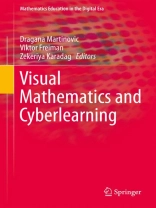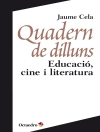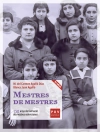This first book in the series will describe the Net Generation as visual learners who thrive when surrounded with new technologies and whose needs can be met with the technological innovations. These new learners seek novel ways of studying, such as collaborating with peers, multitasking, as well as use of multimedia, the Internet, and other Information and Communication Technologies. Here we present mathematics as a contemporary subject that is engaging, exciting and enlightening in new ways. For example, in the distributed environment of cyber space, mathematics learners play games, watch presentations on You Tube, create Java applets of mathematics simulations and exchange thoughts over the Instant Messaging tool. How should mathematics education resonate with these learners and technological novelties that excite them?
Daftar Isi
1. Keith Jones, Eirini Geraniou, & Thanassis Tiropanis: Patterns of collaboration: Towards learning mathematics in the era of the semantic web.- 2. Gorjan Alagic & Mara Alagic: Collaborative mathematics learning in online environments.- 3. Murat Perit Cakir & Gerry Stahl: The integration of mathematics discourse, Graphical reasoning and symbolic expression by a Virtual Math Team.- 4. Beste Güçler, Stephen Hegedus, Ryan Robidoux, & Nicholas Jackiw: Investigating the Mathematical Discourse of Young Learners Involved in Multi-Modal Mathematical Investigations: The Case of Haptic Technologies.- 5. Dragan Trninic & Dor Abrahamson: Embodied interaction as designed mediations of conceptual performance.- 6. Luis Radford: Sensuous Cognition.- 7. George Gadanidis & Immaculate Namukasa: New media and online mathematics learning for teachers.- 8. Ann Le Sage: Web-based video clips: A supplemental resource for supporting pre-service elementary mathematics teachers.- 9. Dragana Martinovic, Viktor Freiman, & Zekeriya Karadag: Visual mathematics and cyberlearning in view of Affordance and Activity Theories.












